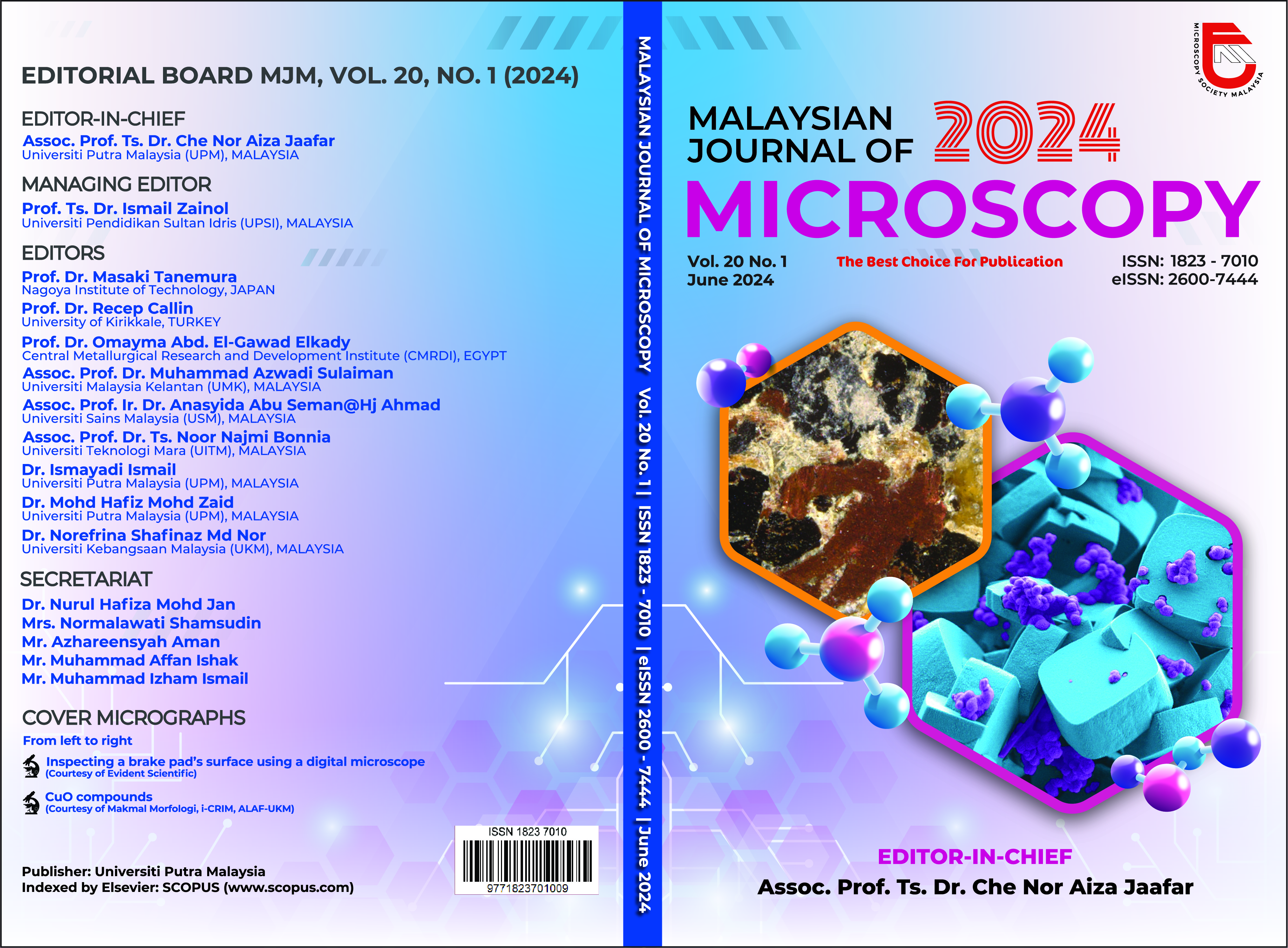EFFECT OF AGING TIME ON THE FORMATION OF MESOPOROUS TITANIA NANOPARTICLES VIA SOL-GEL METHOD
Abstract
This paper reports the effect of aging time (2, 4 and 6 days) on the formation of mesoporous mitania nanoparticles (MTN) prepared via sol-gel method. The structural properties of the prepared catalysts were investigated by X-ray diffraction (XRD), Field-emission scanning electron microscopy (FESEM) with EDX analysis and N2 adsorption-desorption analysis (BET). The XRD analysis revealed that MTNs were successfully synthesized and possessed different crystallite size depending on the aging time. Morphology studies using FESEM-EDX witnessed the formation of agglomerated spherical nanoparticles in the range of 5-50 nm and uniform distribution of Ti and O on the surface of catalysts. N2 adsorption-desorption analyses demonstrated MTN-2 possessed the largest surface area and pore volume compared to the MTN-4 and MTN-6, which due to blockage of the interparticle voids and excessive particles growth of MTN upon prolonged aging time. The MTN-2 achieved 88.35% of MB photodegradation within 210 min, followed by MTN-4 and MTN-6 with 78.87% and 66.38%, respectively. The superior performance of MTN-2 is aligned seamlessly to it low crystallite and particle size as well as high surface area, that promoted more active sites on the MTN surface, which in turn increased the photodegradation of MB. This study highlighted the promising potential of MTN-2 as a photocatalyst in MB photodegradation.


